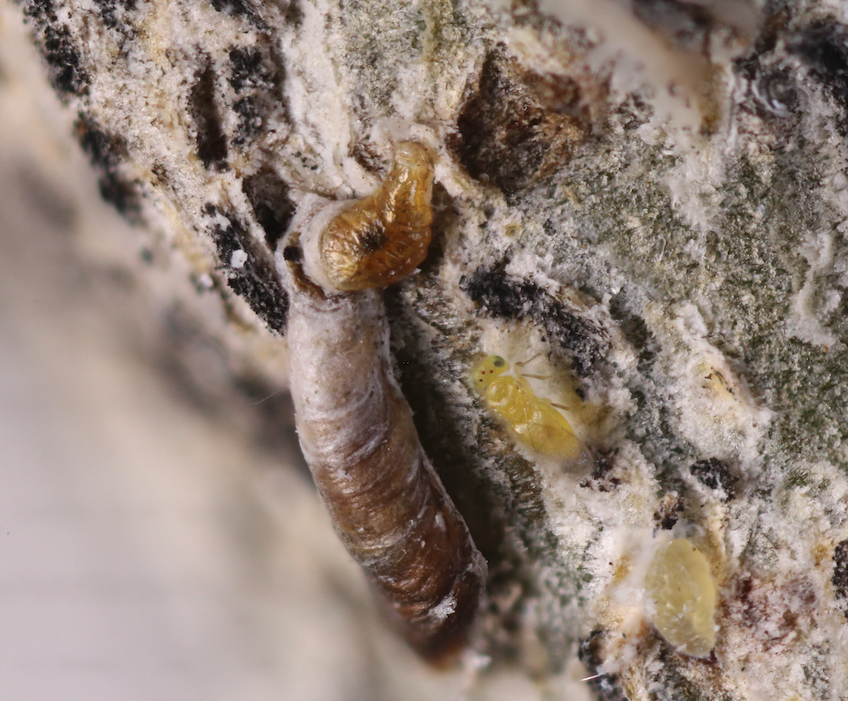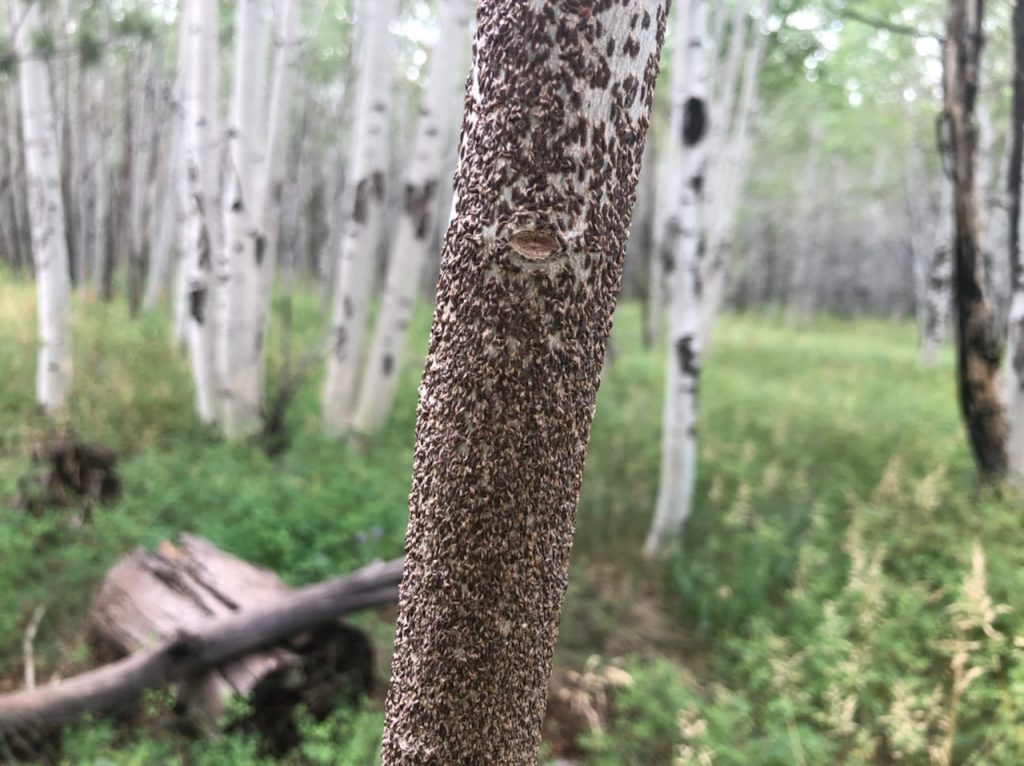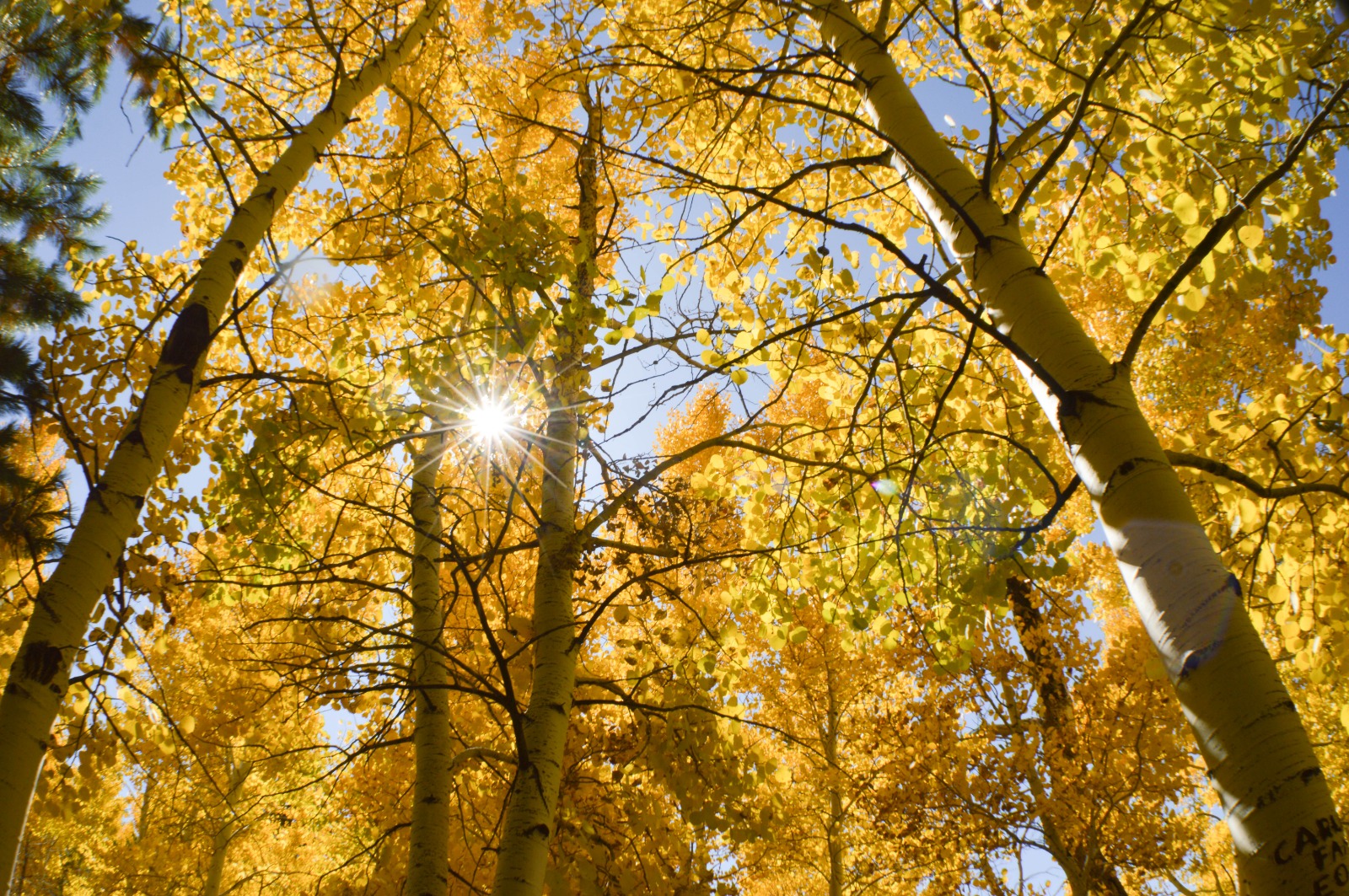When you envision the fall colors in Flagstaff, are you imagining a beautiful grove of aspens with their yellow-ish orange leaves, dancing in the wind? Aspens and other deciduous trees are an autumn staple—generating tourism revenue, Instagram-worthy content and important biodiversity. They are a considered a keystone species in the conifer-dominated western U.S. and the Colorado Plateau, but unfortunately, they are plagued with a bug problem.
The invasive insect, oystershell scale (OSS), is causing serious damage to aspens throughout northern Arizona. A team from the School of Forestry that includes professors Kristen Waring and Richard Hofstetter and graduate students Connor Crouch and Kelsey Pemberton, are collaborating with the U.S. Forest Service, including NAU alum Amanda Grady, to further understand the effects of OSS.
Oystershell scale are sap-sucking insects. They are an invasive species, not native to this area but not necessarily new. Likely brought by European settlers in the 1700s, OSS is primarily causing ecological harm, and because aspens provide a critical habitat for many wildlife species, OSS damage has become problematic. Aspens produce more water than other forest types, something that is increasingly important in the dry climates of the Southwest.
Crouch’s dissertation focuses on determining where OSS occurs in Arizona, quantifying its impact and identifying what influences the presence and severity of OSS. Since beginning his research, Crouch has been surprised to see how pervasive OSS already is in northern Arizona. The team found evidence of invasions in four of Arizona’s six national forests (Coconino, Kaibab, Prescott and Apache-Sitgreaves).

“Either the climate used to control the population (cold temperatures in the winter), or the warming climate has greatly increased aspen stress and thus susceptibility to OSS, or an interaction between these factors,” Waring said. “The concern is that OSS is rapidly killing the smaller and younger trees, which are the future forest.”
The OSS are skilled assassins, and there is a sense of urgency to understand the insects before losing an entire host species from our forests.
It isn’t all bad, though.
“We were also surprised, but encouraged, to find that the insect only occurs in lower elevation aspen stands,” Crouch said. “For example, you can find it in the aspen forests in and immediately around Flagstaff, but it doesn’t occur on the higher elevation aspen stands on the San Francisco Peaks.”
So, what can be done about OSS? That is the million-dollar question! That is where Pemberton comes in. She is pursuing a master’s in forestry, and her research is focused on finding a way to control the OSS population. While there are options like prescribed burns and clear-felling, Pemberton is looking into natural predators as a way to control the spread of OSS.
“There is no record of their natural predators in Arizona literature,” she said. “I am trying to identify all the common types of predators of OSS that occur naturally—in other words, we are not introducing any predators that do not already exist in the environment. These natural predators are all insects, and if we determine which one functions best, then we can release large numbers of these predators into the landscape to reduce and control the amount of OSS.”
Pemberton is finding that natural predator populations are different between urban and natural environments. Despite assuming that natural environments have more natural predators, early reports are showing that urban settings might actually have the upper hand. As Pemberton and team continue to research OSS and their impact on aspen populations, time is of the essence—as OSS populations grow, so too does the effect of their sap sucking.

(928) 523-4789 | McKenzie.McLoughlin@nau.edu





